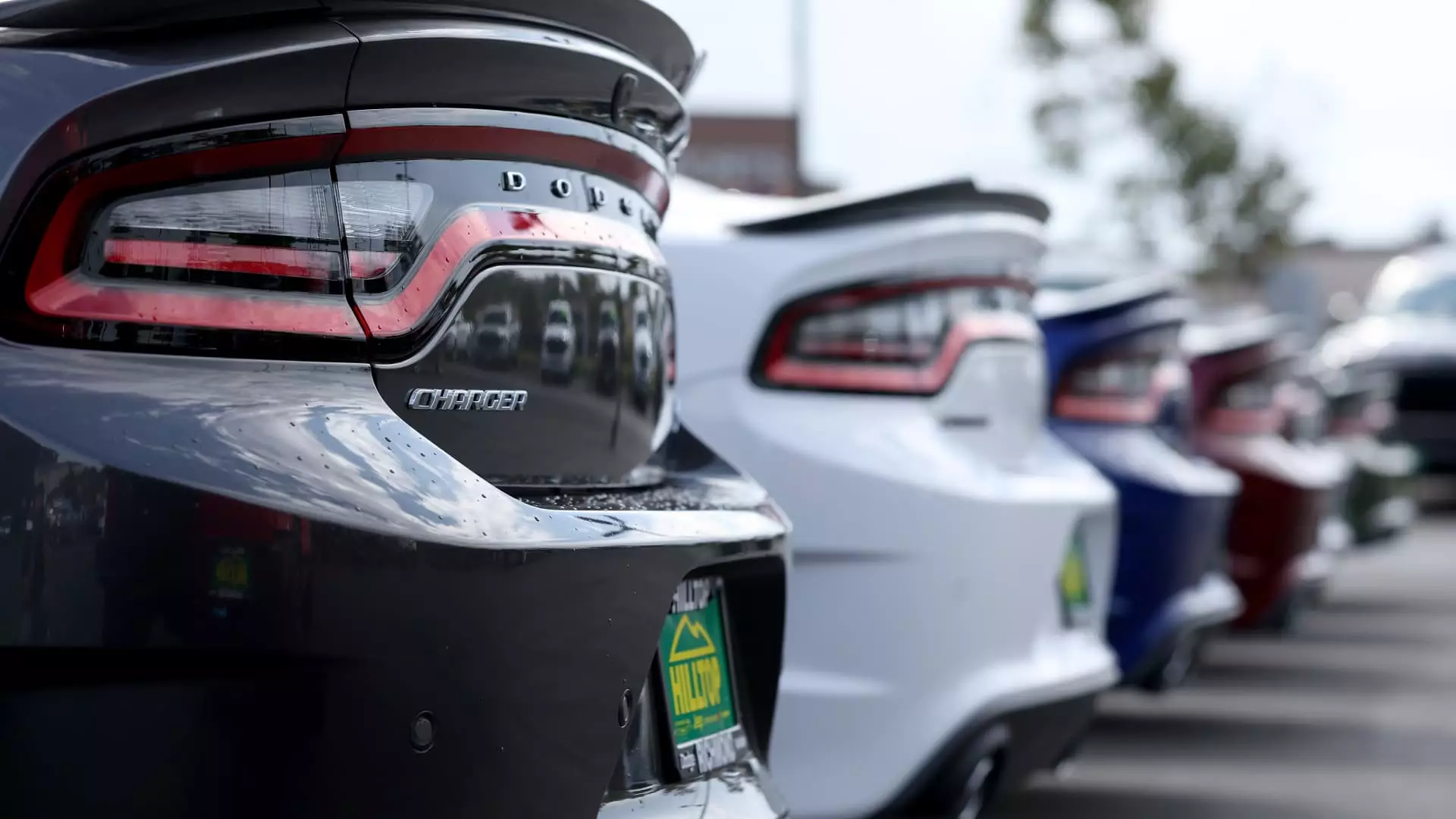The automotive industry in Europe is currently navigating turbulent waters, marked by significant declines in stock valuations and profitability. Major players such as Stellantis and Aston Martin have recently issued urgent profit warnings, primarily due to escalating challenges in global markets, particularly in China. The implications of these warnings are far-reaching, impacting not only shareholders but also the strategic direction of the companies involved.
Stellantis, the multinational automotive giant formed from the merger of Fiat Chrysler and PSA Group, has made headlines with its downward revision of profit expectations for 2024. The company cited a deteriorating environment in the auto industry, where increased competition, particularly from Chinese manufacturers, has put immense pressure on their market positions. Originally forecasting a robust “double-digit” operating income margin, Stellantis has now projected a more subdued range of 5.5% to 7%.
The automaker’s struggle springs not only from external market forces but also from internal performance issues, particularly in North America. Stellantis announced significant remediation efforts in response to its declining performance in this critical market, although details remain scarce. Further complicating matters, the company has adjusted its industrial free cash flow expectations to reflect a worrying shift from previous optimistic projections to a range of losses between €5 billion and €10 billion.
Investors reacted sharply to the news, with Stellantis’ stock plunging by 13% during early trading hours. These developments not only raise concerns about Stellantis’ current strategies but also cast a shadow over the broader automotive sector, suggesting that the challenges may be more systemic than previously acknowledged.
Aston Martin’s Struggles: Luxury Meets Adversity
Alongside Stellantis, Aston Martin—known for its luxurious offerings and cultural significance through its association with the James Bond franchise—has also revised its profit forecasts downward. The company announced a production cut of about 1,000 units, attributing this decision to ongoing supply chain disruptions and an unstable macroeconomic landscape in China. Aston Martin’s expectations for earnings before interest, taxes, depreciation, and amortization (EBITDA) for 2024 have also been adjusted downward, reflecting a cautious outlook for the luxury segment.
Notably, Aston Martin stated that it no longer anticipates achieving positive free cash flow in the latter half of the year. This news hit the market hard, resulting in a staggering 23% drop in share value, marking the company’s steepest one-day decline since March 2020. The difficulties illustrate how luxury brands are not immune to broader market destabilization and consumer hesitancy.
The challenges faced by Stellantis and Aston Martin are set against a backdrop of intensifying competition, especially from Chinese automakers eager to expand their footprints in Europe and globally. The rise of electric vehicles (EVs) has further compounded these challenges, with European manufacturers finding it increasingly difficult to compete with Chinese brands that are rapidly innovating and adapting to market demands.
Adding to the woes, German automotive giant Volkswagen recently slashed its profit outlook for 2024, a clear indication that even established brands are not shielded from the industry’s broader challenges. The reported decline in their operating return on sales demonstrates a concerning trend across several European firms, reflecting lagging developments in passenger and commercial vehicle sectors.
The ramifications of these profit warnings and market readjustments extend beyond immediate financial concerns; they also signal a potential shift in the automotive landscape. As European carmakers grapple with competition and market volatility, the industry’s future may hinge on innovation, particularly in electric vehicles, and strategic repositioning to reclaim lost market share.
Analysts have warned of the need for European car manufacturers to reevaluate their strategies to navigate the transition toward EVs effectively. The inability to adapt could lead to a continued decline in market presence, jeopardizing not just individual companies but also the broader European automotive sector.
The current crisis faced by European automotive giants like Stellantis and Aston Martin underscores significant industry challenges. The profit warnings reflect a convergence of market pressures, competitive dynamics, and internal performance issues that demand urgent attention. Moving forward, European car manufacturers must engage in strategic reevaluation and innovation if they hope to maintain relevance in an increasingly competitive global market. The road ahead is fraught with challenges, but it also presents a crucial opportunity for transformation and growth.


Leave a Reply